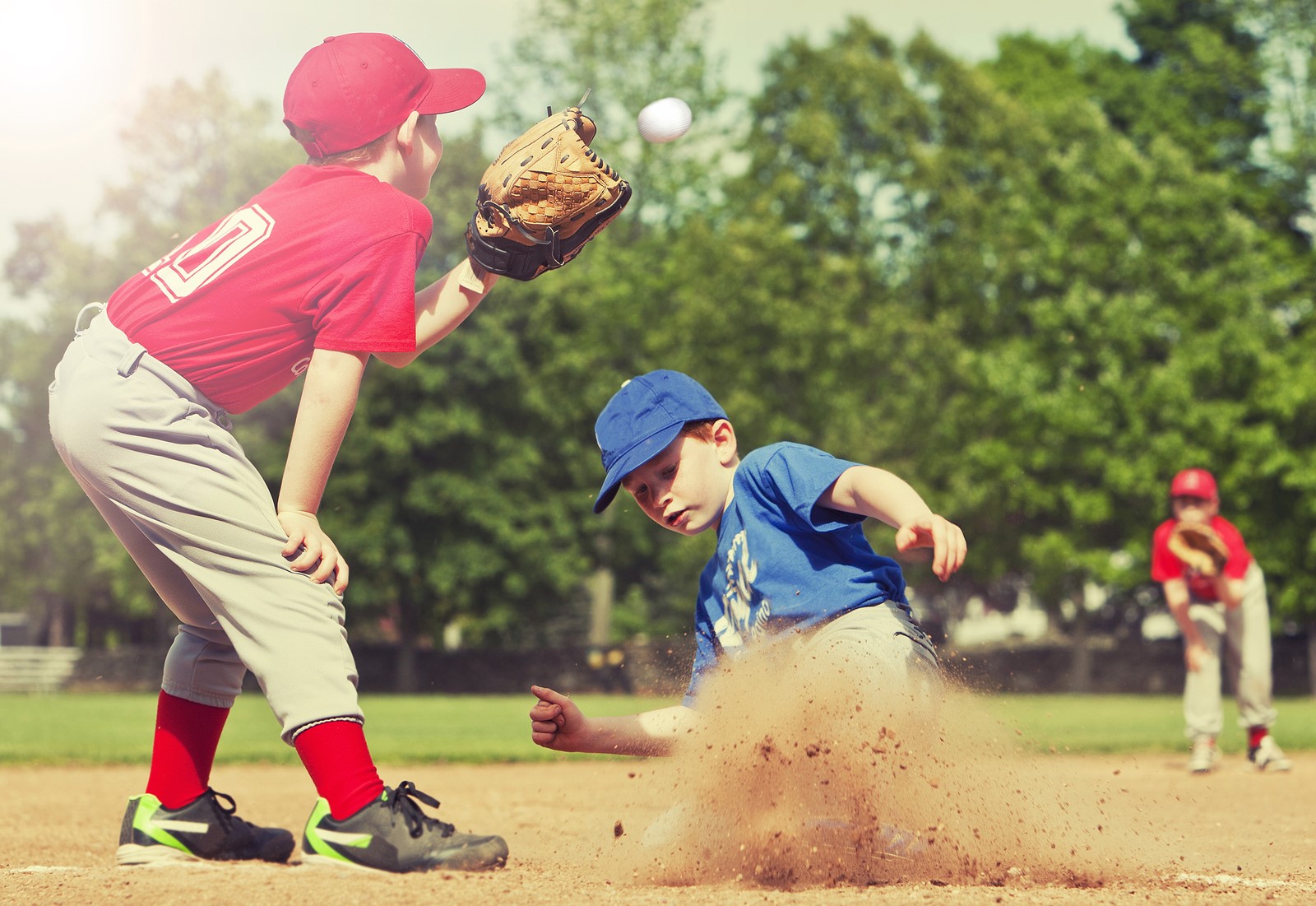
Little League Baseball Sports Injuries
Little League Sports Injuries are common. When Little League Baseball season starts, parents and coaches are usually excited to get the kids on the field. Little do they know that Little League Baseball can be a lot of fun for many reasons, but also very dangerous if not taken seriously. Let’s look at some common Little League Baseball sports injuries and prevention.
Common Little League Baseball Sports Injuries
Repetitive stress on a muscle, tendon, ligament, cartilage, or bone is characteristic of chronic and overuse injuries. Stiffness, swelling, discoloration, loss of mobility or strength, favoring the affected area, or loss of velocity or control are all signs of damage. Because of the overhead nature of the activity, injuries to any area of the body are possible; however, the most prevalent injuries are to the shoulder and elbow.
Proximal humeral epiphysiolysis (youth throwing shoulder syndrome), rotator cuff injury, labral injury, internal impingement, scapular dyskinesis, glenoid and capitellar osteochondritis dissecans, medial epicondyle injuries, ulnar collateral ligament injuries, elbow posteromedial impingement, elbow tendinitis, and ulnar neuritis are some of the most common shoulder and elbow problems. (American Orthopaedic Society)
Adults and younger baseball players alike put a lot of strain on their throwing arms when they toss a baseball. Stress is absorbed by the ligaments and tendons in, and as a result, develop tendonitis or ligament stretching. The stress is taken by the weakest sections of the bones, which are the cartilage at the ends of the bones, in growing youngsters. Damage to this cartilage, which is the region of the bone where development takes place, can have long-term ramifications for the shoulder or elbow. (John Hopkins Medicine)
The growth plate is a specialized portion of the bone that is placed near the joint and is responsible for bone development. This region lacks the strength of bone, ligaments, and tendons. As a result, the growth plate is more impacted than the other components when the shoulder or elbow is stressed by a baseball pitch. This is only an issue if the stress occurs regularly and in substantial amounts.
Pitchers are the most vulnerable to these issues since they throw hard and frequently. One of the reasons that league regulations restrict the number of innings (and ideally pitches) a player may pitch is because of this. (John Hopkins Medicine)
Prevention of Injuries
Fatigue continues to be a major factor when it comes to injuries in youth baseball. Fatigue can be classified in three ways
- Event Fatigue which when you have too many pitches in a game
- Seasonal Fatigue is defined as a season with too many pitches and/or innings
- Year-Round Fatigue is a result of playing kids’ baseball all year.
When their children become tired, parents should realize the danger. Little League International has worked hard to educate its coaches, players, parents, and grandparents about the dangers of tiredness and arm injuries, as well as the precautions that must be followed to play the game safely.
It is suggested that young players who play year-round baseball take at least two months off each year without participating in any form of overhead sport. It is advised that you take three to four months off each year. (Little League, 2019)
America’s Favorite Pastime
Little League Baseball is a great way to get children active and teach them teamwork skills, but it’s important to take precautions to avoid common injuries. In the case of existing injuries, make them wear a guard or cushion to protect contusions (bruises) from further trauma as they heal. Ice and range-of-motion exercises should be used to treat sprains of the hand, wrist, shoulder, ankle, or foot.
It is critical that the player be honest about any pain he or she is experiencing, and that parents, coaches and other adults involved enquire about the player’s discomfort on a regular basis. It’s crucial not to try to hide or ignore the discomfort. If there are indicators of a fracture, such as deformity, loss of feeling, or substantial swelling or discomfort, the athlete should be checked by a medical doctor.
Know Before You Go Emergency Care
Having a plan for emergency care for your child is important and prudent. Connect with a medical facility that can perform radiology on site as well as advanced knowledge of concussion. Having the proper diagnosis and after care of a little league baseball injury will reduce long-term complications and return your child to the playing field to do more of what they love.
Works Cited
“Elbow Problems in Little League Baseball Players.” Johns Hopkins Medicine, www.hopkinsmedicine.org/health/conditions-and-diseases/elbow-problems-in-little-league-baseball-players.
Little League. “The Number-One Risk of Arm Injuries Continues to Be Year-Round Play.” Little League, 1 July 2019, www.littleleague.org/university/articles/the-number-one-risk-of-arm-injuries-continues-to-be-year-round-play/.
Baseball Injuries – American Orthopaedic Society for … www.sportsmed.org/aossmimis/STOP/Prevent_Injuries/Revised/Sports/Baseball%20Injuries.pdf.
